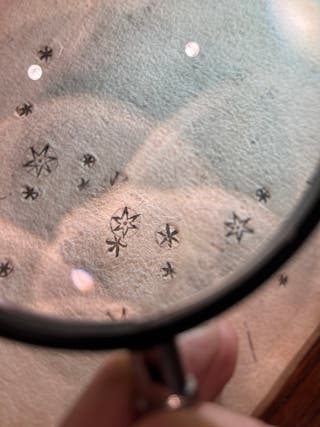Library Lectures
Linda Hall Library offers a number of lectures to the public on a variety of topics. These lectures have been selected to provide insight into basic astronomical concepts, or because they help students understand more about the world of astronomy.
"How Do I Become" Series
Linda Hall Library hosts the student-focused program, the "How Do I Become" series, which introduces students to scientific professionals and resources for a variety of STEM careers. The following selections would be suitable for middle or high school students to not only introduce students to STEM topics, but also help prepare them for careers in STEM-related fields. The selection of videos for this guide was created to highlight the programs covering astronomy careers, but there are a variety of other "How Do I Become" videos available on the Linda Hall Library's Vimeo page and YouTube channel that discuss other STEM professions.
Astronomy Lectures
The Library produces a plethora of recorded lectures and interviews about diverse astronomy topics. Bring real-world research projects and international astronomy conversations to the forefront of the classroom through viewing sections of complete runs of these videos.
James Webb Space Telescope
Hear from a representative of the Astronomical Society of Kansas City, Elizabeth Brown, as she discusses how the James Webb Space Telescope (JWST) operates through complex science and engineering. She also covers the mission of JWST, which aims to capture images of the early universe, galaxies over time, star life cycles, and other worlds. Since this lecture was given, various images have come from JWST. How do these images align with the overall mission of this telescope?
Making Space: Women Who Have Shown Us the Stars
Learn about important contributions women have made in astronomical science from Dr. Héloïse Stevance and Linda Hall Library's Assistant Curator of Rare Books and Manuscripts, Dr. Jamie Cumby. Dr. Stevance and Dr. Cumby dig into the stories of six astronomers to answer the question: How did women come to be astronomers before the mid-20th century?
The Glass Universe: How the Ladies of the Harvard Observatory Took the Measure of the Stars
Given by Dava Sobel, a former New York Times science reporter and the best-selling author of the books: Longitude, Galileo's Daughter, The Planets, A More Perfect Heaven, And the Sun Stood Still, and The Glass Universe; this lecture covers the history of the women who Harvard College Observatory employed to act as "human computers" in the mid-19th century. As time went on, these women not only completed computational work, but also helped determine what stars are made of, how to measure distances between them, and meaningful ways of dividing stars into categories.
Things that Give You Stars in Your Eyes: Digitized Collection Highlights
Hear from Sian Prosser, Librarian and Archivist at the Royal Astronomical Society, and Jason W. Dean, Vice President for Special Collections at Linda Hall Library about the overlapping astronomical collections held at these institutions. A four-part lecture series, this episode highlights show-stopping materials that Prosser and Dean selected from their respective collections.
Stellar Adventures, Part 1
A collaborative program with the University of Missouri - Kansas City, this class-style lecture from Professor William B. Ashworth discusses the history of astronomy from the ancient Greeks to the 19th century. A combination of stories about individual publications, scientists, and more collaborative scientific organizations, this lecture highlights many digital images from the Linda Hall Library's collection of celestial maps.
Looking for a lecture or interview on a different astronomy topic? Check out other videos available on the Library's Vimeo page and YouTube channel.

